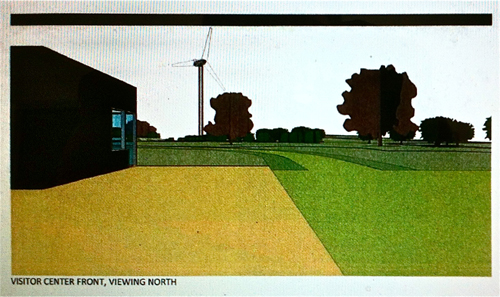Village’s energy park plan wins architectural award

When Greenport Mayor David Nyce first pitched his idea to develop an eco-friendly park at Clark’s Beach in March, local architects Hideaki Ariizumi and Glynis Berry of Studio a/b Architects already had a design concept in mind.
Since the beginning of the year, the duo, along with Southold-based environmentalist and artist Lillian Ball, has been creating a custom design for the 8.7-acre soundfront parcel in Greenport. Eleven months later, the team is being honored by the Peconic Chapter of the American Institute of Architects for the conceptual design of the park.
Each year the AIA Peconic recognizes designers who have made a significant achievement in a broad range of architectural projects, executive director Kay Jones said. Studio a/b Architects’ eco-park design was one of 10 nominees for the award that was judged by three out-of-area architects.
This year’s AIA Peconic jurors included Jordan Gruzen of AIA and Gruzen Samton Associates, Kim Yao of AIA and Kim Yao Architectural Research Office, and Eric Goshow, president of the New York State Chapter of the American Institute of Architects.
“We are really happy about it,” Ms. Berry said. “We really appreciate the validation from our peers who see value in our efforts.”
The mayor’s plan for Clark’s Beach calls for combining wind turbines and solar arrays, and generating two to four megawatts of electrical power, which the mayor says could make the village energy independent and stabilize residents’ electric bills.
With that in mind, the team centered their design around two goals, Ms. Berry said. The first: to build a self-generated energy system to replace the costly open market purchase of supplemental electricity. The second: to develop the site as a public park, educational facility, conference center and demonstration site for a range of sustainable and green infrastructure practices.
The team used the site’s existing terrain to structure the design plan, Ms. Berry said. They chose to locate the solar panels at the Clark’s Beach entry with buildings and parking spaces that would be housed underneath.
Buildings like the visitor’s center would be submerged into the hill, she said, of the design.
Drawing on the sun, wind, earth and water as inspiration, they planned for hiking trails that would include cabins and trails with themes such as “Sundial Cabin” on the “Sun Trail” and “Water Harvesting Cabin” on the “Water Trail.”
“Basically, we were trying to make a connection between the energy sources and the land itself,” Ms. Berry said. “We were trying to relate it to alternative energy. Wind and solar energy are two big components of the project so the concept kind of generated from that.”
The village is currently awaiting approval for the project’s first preliminary planning grant from the Regional Economic Development Council.
The grant would fund a study to measure the feasibility of building the proposed solar and wind-generating system on the village-owned property.








